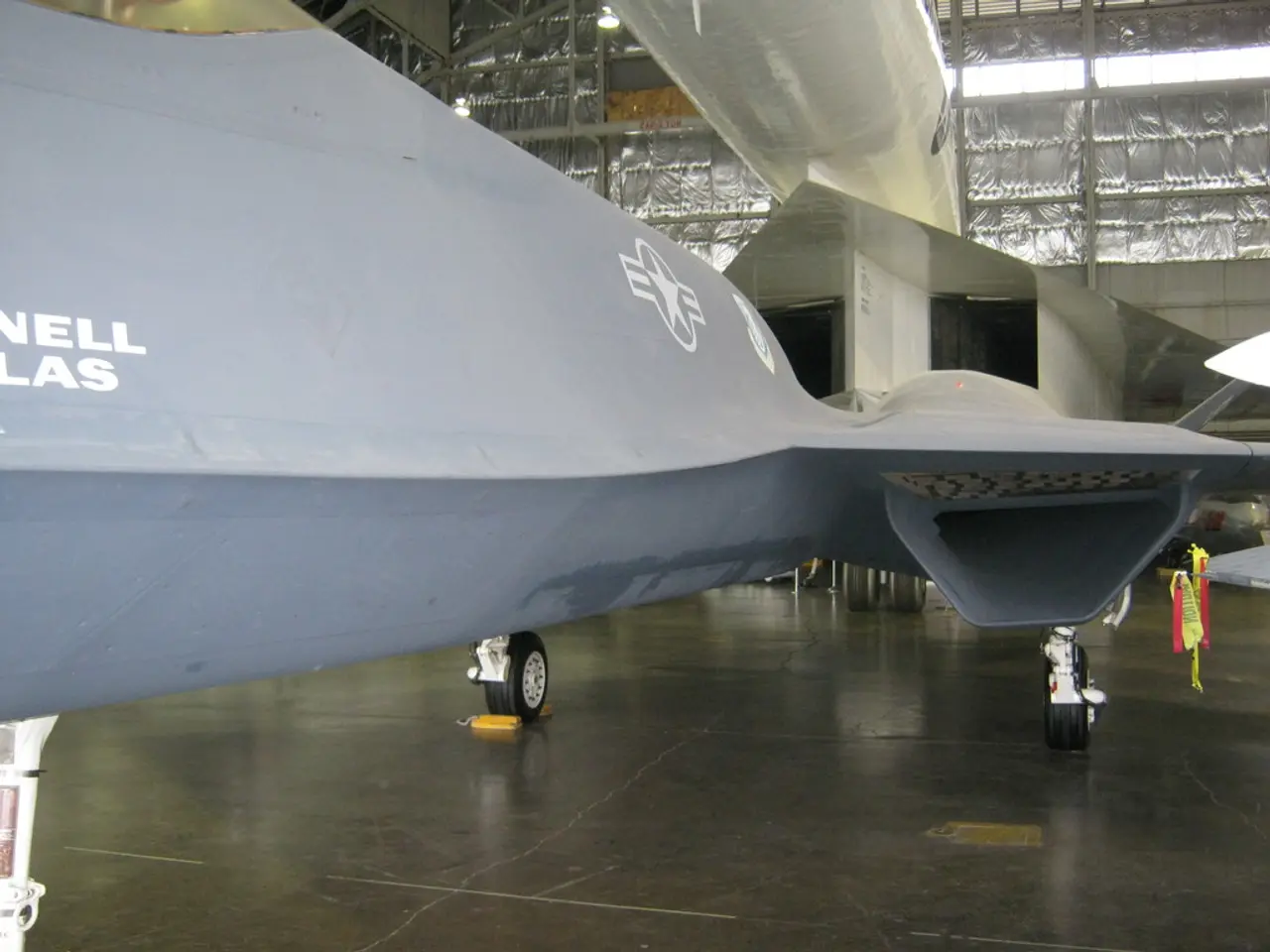Aircraft safety: Considerations for cell phone usage mid-flight
In the skies above, a common sight for many is the smartphone, a device that has become an essential part of our daily lives. However, when it comes to air travel, these devices are often viewed with caution. This article delves into the reasons behind the prohibition of mobile phones on planes and the potential dangers they pose to flight safety.
The first cell phone was invented by Martin Cooper of Motorola in 1973, but it wasn't until 1991 that the use of mobile devices was banned in aircraft. This ban was implemented due to concerns that the radio transmissions from these devices could interfere with aircraft navigation and communication systems, potentially disrupting critical avionics that ensure safe operation during flight [1][5].
Regulatory bodies, such as those cited in the Civil Aviation Act and the U.S. CFR, mandate disabling transmitting functions (e.g., switching to airplane mode) to prevent such interference [1][5]. While some recent tests suggest that phone emissions have a negligible direct impact on avionics, airlines maintain these rules to eliminate any risk of interference and to ensure passenger attention and safety during critical phases like takeoff and landing [2][3].
The primary concern is that radio signals from mobile phones could interfere with avionics systems, especially in older aircraft or sensitive equipment, compromising navigation and communication safety [1][4][5]. There are also secondary concerns about fire hazards from lithium-ion batteries in mobile devices [4].
Despite the ban, incidents have occurred where devices have been linked to disruptions in aircraft systems. For instance, a case was reported where the aircraft navigation system failed at 30 degrees and was resolved after a passenger turned off their DVD player [6].
While a phone crash causing an aviation accident has not been recorded, the potential dangers it may cause to flight safety should not be underestimated. Ignoring warnings regarding the use of devices during flight can endanger lives [7]. It is important to turn off mobile phones completely or switch to flight mode on all plane trips, just in case [8].
Safety is a priority in the aviation industry, and rules must be proven safe. Some airlines use miniature base stations like On-Air and AeroMobile to enable the use of mobile devices on board, providing signals at low levels [9]. However, these exceptions do not apply during takeoff and landing, when the devices must be turned off or switched to flight mode [2][3].
In conclusion, while mobile phones have become indispensable for many, their use during air travel remains a safety concern. The potential for radio interference and fire hazards necessitate stringent regulations regarding their use on planes. As travelers, it is our responsibility to adhere to these rules for the safety of all on board.
References:
- Federal Aviation Administration (FAA). (2021). Portable Electronic Devices (PEDs). Retrieved from https://www.faa.gov/about/initiatives/civil_aviation_security/media/PED_FAQ.pdf
- International Air Transport Association (IATA). (2021). Passenger Electronic Devices. Retrieved from https://www.iata.org/contentassets/6a44854e1a964e49a0869719d56c559b/passenger-electronic-devices-peds.pdf
- European Aviation Safety Agency (EASA). (2021). Use of Portable Electronic Devices (PEDs) on board aircraft. Retrieved from https://easa.europa.eu/sites/default/files/2021-03/Use_of_Portable_Electronic_Devices_PEDs_on_board_aircraft_2021.pdf
- Federal Aviation Administration (FAA). (2021). Lithium Batteries. Retrieved from https://www.faa.gov/hazmat/packsafe/lithium_batteries/
- Aviation Safety Reporting System (ASRS). (2021). Passenger Electronic Devices. Retrieved from https://www.asrs.arc.nasa.gov/nasadb/reports/?rpt=116000000
- The New York Times. (2001). Cellphone May Have Caused Plane's Trouble. Retrieved from https://www.nytimes.com/2001/08/20/us/cellphone-may-have-caused-planes-trouble.html
- Federal Aviation Administration (FAA). (2021). In-flight Electronic Devices. Retrieved from https://www.faa.gov/about/initiatives/civil_aviation_security/media/In-flight_Electronic_Devices.pdf
- Transportation Security Administration (TSA). (2021). Electronic Devices. Retrieved from https://www.tsa.gov/travel/security-screening/whatcanibring/items/electronic-devices
- On-Air. (2021). On-Air. Retrieved from https://www.on-air.aero/
- AeroMobile. (2021). AeroMobile. Retrieved from https://www.aeromobile.net/
The invention of the first cell phone in 1973 marked a significant milestone in aviation history, yet it wasn't until 1991 that the use of such devices was prohibited in aircraft, due to concerns about potential interference with critical avionics systems that ensure safe operation during flight. As travelers, adhering to regulations about mobile phone use on planes is essential to maintain aviation safety and lifestyle, given the potential dangers posed by radio emissions and fire hazards from lithium-ion batteries.




